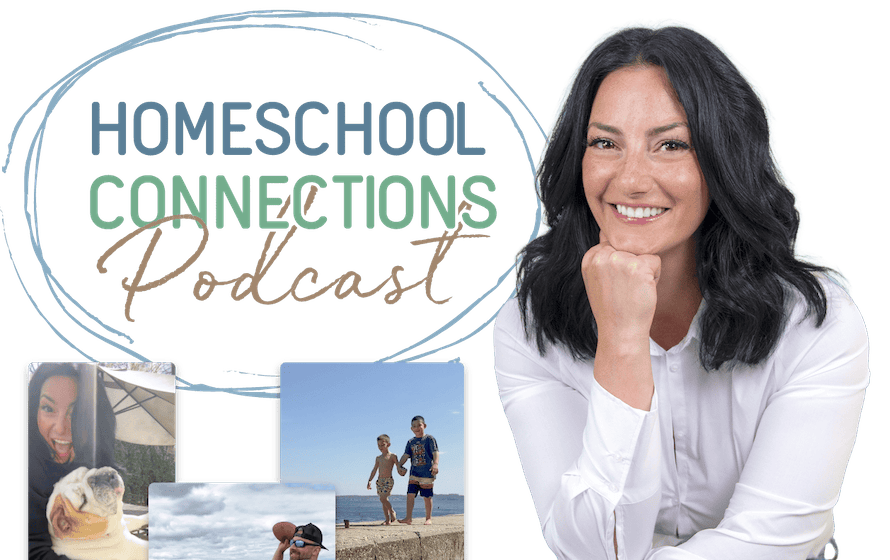Talking ASL with Marlana Weber
If your child is interested in learning sign language, you’re going to love this article, because today I am talking with Homeschool Connections instructor Marlana Weber about all things ASL. Marlana teaches two ASL courses with HSC: American Sign Language 1 and American Sign Language 2.
Tell us about the origin of ASL. Where did it come from, and how did it develop?
American Sign Language (ASL) originated in the early 1800s, thanks to the efforts of Thomas Gallaudet and Laurent Clerc. Gallaudet, from Connecticut, and Clerc, from France, played pivotal roles in developing ASL. At that time, the United States did not have an established sign language. Gallaudet traveled to England and France after hearing about their sign languages used by deaf communities.
Gallaudet met a young deaf girl named Alice Cogswell and discovered there were no schools in the United States for deaf children, despite her clear intelligence. Determined to create educational opportunities for her and other deaf children, Gallaudet traveled to Europe, where he met Laurent Clerc, a teacher for deaf children in France. Gallaudet convinced Clerc to come to the United States to help establish a school for deaf children. Together, they founded the American School for the Deaf. Today, Gallaudet and Clerc are celebrated as the founders of American Sign Language and pioneers of deaf education in the United States.
How did you first get interested in ASL?
When I was young, I was fascinated with sign language and learned how to fingerspell. In high school, I briefly dated a young man whose entire family was deaf. This changed everything for me. When we would get together, I was surrounded by people who knew sign language. I started picking up on the language through his family.
While we obviously did not end up together, we stayed friends through high school. I continued to pick up new signs, learning from him and his family. I pursued American Sign Language at my community college as a dual enrollment student in high school. At college, I studied Communication Disorders and Audiology before getting my degree in English, which required me to take four semesters of ASL. I ended up with the equivalent of a four-year ASL program.
How long, realistically, does it take one to become fluent in ASL?
I think it is a pretty close consensus among most languages: it can easily take many years for an adult to become fluent, ASL included. The upside for younger students, though, is their brains are wired to learn languages much quicker than adults. The younger you are, the easier it is to learn and remember it. However, usually, after one year of learning, you have enough foundation to be able to communicate with someone in the Deaf Community. The more you immerse yourself in the community, the quicker and easier it is to learn the language. The nice thing about American Sign Language is we are in America where plenty of people use it! The Deaf Community is very welcoming and eager to help those wanting to learn the language.
ASL stands for American Sign Language. Does that mean there are other sign systems in other countries, or is ASL universal?
Most people are surprised to learn that ASL is definitely not a universal language! Language experts say there are about 300 different sign languages across the world. Many countries have their own sign languages. This includes Britain, Australia, China, France, Brazil, Portugal, and Indonesia, You can see the list goes on! Even further, just as we have accents, dialects, and slang words used within our own country (think like pop-soda-cola), the same goes for ASL (and the other signed languages). You might see the sign for birthday in different ways, or Halloween, or even the letter E signed slightly differently depending on where you live!
It seems like there has been a growing interest in ASL over the last few years. Is this so? And if so, what do you think is behind it?
ASL has proven to be a powerful tool beyond using it as your foreign language requirement. “Baby signs” have really gained popularity over the last few decades because we have learned that young babies can communicate incredibly quickly with their hands. They understand what we are signing very early on! It is much quicker and easier for a young child to communicate using signs than getting their mouths to articulate difficult words properly.
It was also discovered that many older students with dyslexia or any speech impairment do exceptionally well learning American Sign Language. The physical aspect of using your body to communicate and learn a language is much less daunting for those who struggle with some learning disabilities. My own dyslexic teenager will attest to this!
Plus, I think our society is much more culturally aware of differences among people. We make greater efforts to ensure everyone feels welcomed in all environments. This inspires many people to genuinely want to learn about different cultures and communities, including the Deaf Community.
What were some challenges you faced in crafting an ASL course for an online medium like Homeschool Connections?
In college, I learned ASL in a fully immersed classroom with deaf instructors. However, we had three hours a day, multiple times a week! For us with HSC, we meet LIVE once a week for one hour. I knew right away we were going to have to mix some spoken language with learning signs. So, I put it as a requirement for my class that you must have a working camera.
Another obstacle was that I couldn’t physically walk up to a student and fix their hands to show the proper sign. However, with working cameras, we can get close to correcting mistakes, seeing minor details, and relying on each other to help practice.
Quizzes were a challenge/ I spent a good amount of time figuring that out but it was successful in the end. I didn’t want to waste valuable classroom learning time by quizzing students during class. Nor did I want them (or parents) to have to figure out how to upload videos every week. Luckily, there are a lot of tools for online learning, and I’m still continually trying out new ideas as more resources become available for distance education.
Are there really many opportunities for students who learn ASL to use it in their daily lives?
One thing I like to remind people is that we are blessed with our hearing. We can choose to learn other languages, visit other countries, and immerse ourselves in their language and culture. Those who are deaf do not have a choice to simply learn spoken English or hear it. Nor can they surround themselves in a world designed for the hearing.
I think everyone should at least know the ASL alphabet and some basic signs to communicate. You’d be amazed when you look around at how many chances you have to use ASL to communicate with others. I’ve used it working in retail, shopping, and recently at my son’s swim meet with a deaf grandmother. There are an estimated half-million people, if not more, who use ASL in the U.S. and Canada. I guarantee if you learn it, you’ll find opportunities in your life, sometimes in the least expected place, to use American Sign Language.
Conclusion
Learning ASL can open up a world of opportunities for students and families alike. Whether you are interested in fulfilling a foreign language requirement, enhancing communication skills for children, or simply fostering inclusivity and understanding, ASL is an invaluable tool. Marlana Weber’s engaging courses at Homeschool Connections offer a fantastic way to start this journey. To explore more about ASL check out Marlana’s courses with Homeschool Connections.
To continue the discussion, join me and other homeschooling parents at our Homeschool Connections Community or our Facebook group!
If you want to learn more about Marlana Weber and her ASL course, check out this wonderful interview she did with HSC’s Mike Creavey:






